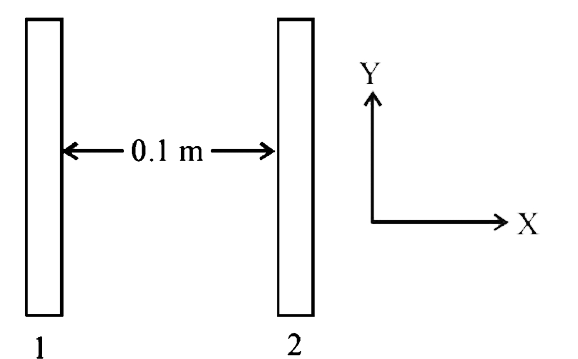v20.1
10Ω
20Ω
40Ω
None of the above three values
Step by step video solution for v20.1 by Physics experts to help you in doubts & scoring excellent marks in Class 12 exams.
Topper's Solved these Questions
- BOOK - TARGET PUBLICATIONCHAPTER - CURRENT ELECTRICITY EXERCISE - Evaluation Test6videos
CURRENT ELECTRICITY
- BOOK - TARGET PUBLICATIONCHAPTER - CURRENT ELECTRICITY EXERCISE - Critical Thinking24videos
CURRENT ELECTRICITY
- BOOK - TARGET PUBLICATIONCHAPTER - CIRCULAR MOTIONEXERCISE - EVALUATION TEST11videos
CIRCULAR MOTION
- BOOK - TARGET PUBLICATIONCHAPTER - ELASTICITYEXERCISE - Evaluation test14videos
ELASTICITY
Similar Questions
A parallel plate capacitor is constructed with plates of area 0.0280m2 and separation 0.550mm. Find the magnitude of the charge on each plate of this capacitor when the potential between the plates is 20.1V
 View Solution
View SolutionThe velocity fo a body depends on time according to equation, v=20+0.1t2. The body is undergoing.
View Solution
Knowledge Check
- Question 1 - Select One
The velocity of a body depends on time according to the equative v=20+0.1t2. The body is undergoing
Auniform accelerationBunifrom retardationCnon-uniform accelerationDzero acceleration - Question 2 - Select One
The velocity of a body depends on time according to the equative v=20+0.1t2. The body is undergoing
AUniform accelerationBUniform retardationCNon uniform accelerationDZero acceleration - Question 3 - Select One
When a 2 kg car driven at 20m/s on a level road is suddenly put into netural gear (i.e. allowed to coast), the velocity decreases in the following manner:
V=201+(t20)m/s
Where t is time in sec. The deceleration of car at the instant its speed is 10m/s is.A1/4m/s2B1/2m/s2C1m/2D3/4m/s2
A vessel of volume V=201 contains a mixture of hydrogen and helium at a temperature t=20∘C and pressure p=2.0atm. The mass of the mixture is equal is equal to m=5.0g. Find the ratio of the mass of hydrogen to that of helium in the given mixture.
View SolutionTwo insulating plates, shown in the figure, are thi uniformly .charged in such a way that the potentia difference between them is V3−V1=20V (i.e., plate 2 is at a higher potential). The plates are separated by distanc d = 0.1 m and can be treated as infinitely large. Al clectron is roleased from rest on the inner surface of plate 1. Its speed when it hits plate 2 is 2.65×10nms Find n (q=1.6×10−19C,m0=9.11×10−11kg)
'(##CEN_KSR_PHY_JEE_CO19_E01_009_Q02##)' figureView SolutionWrite whether the following are true or false ? Justify your answer.
(i) Point (3,0) lies in the first quadrant.
(ii) Points (1,-1) and (-1,1) lie in the same quadrant.
(iii) The coordinate of a point whose ordinate is -12 and abscissa is 1 are (−12,1).
(iv) A point lies on Y-axis at a distance of 2 units from the X-axis. Its coordinate are (2,0).
(v) (-1,7) is a point in the second quadrant.View SolutionTwo insulting plates are both uniformly charged in such a way that the potential difference between them is V2−V1=20V. (i.e., plate 2 is at a higher potential). The plates are separated by d=0.1m and can be treated as infinity large. An electron is released from rest on the inner surface of plate 1. What is its speed when it hits plate 2? (e=1.6×10−19C, me=9.11×10−31kg)
 View Solution
View SolutionBased on the data given for half cell
(Mx+n+,Mx+∣∣Pt
% of reduced form 50 20
Potential (V) 0.1, 0.112
the value of n is:View Solution

